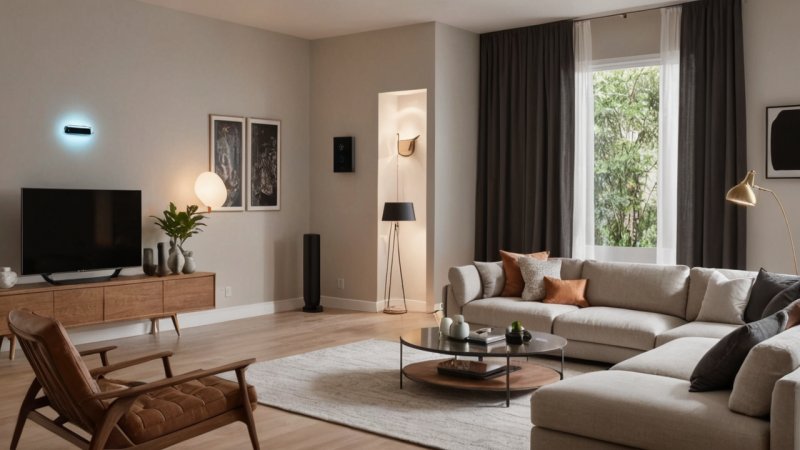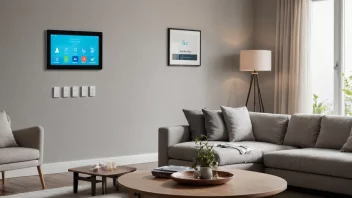The rise of smart home technology has transformed the way we interact with our living spaces, offering increased convenience, security, and energy efficiency. However, setting up a smart home doesn't have to break the bank. In this article, we'll compare two popular approaches to creating a budget-friendly smart home: DIY solutions and pre-packaged kits. Each method has its advantages and disadvantages, and understanding these can help you make an informed decision that fits your needs and budget.
Understanding Smart Home Technology
Before diving into the comparison, it's essential to grasp the basic concept of smart home technology. This term refers to devices that connect to the internet and can be controlled remotely via smartphone applications or voice assistants. Common smart home devices include smart lights, thermostats, security cameras, and smart plugs.
DIY Solutions: Pros and Cons
Pros of DIY Smart Home Solutions
1. Cost-Effective: One of the most significant advantages of DIY solutions is the potential for cost savings. By purchasing individual devices and integrating them yourself, you can often achieve a more customized setup without the markup associated with pre-packaged kits.
2. Customization: DIY installations allow for greater flexibility. You can choose devices that best fit your specific needs and preferences, creating a personalized smart home experience.
3. Learning Experience: Engaging in a DIY project can be a rewarding experience, enhancing your understanding of technology and home automation.
Cons of DIY Smart Home Solutions
1. Time-Consuming: Setting up a smart home from scratch can be time-intensive. Researching products, planning the layout, and troubleshooting issues may require significant investment in time.
2. Technical Challenges: Not everyone is tech-savvy, and the installation process can sometimes be complex. If you run into issues, you may need to seek help from online forums or tech support.
3. Compatibility Issues: With a DIY approach, there's a risk of purchasing devices that may not work well together. Ensuring compatibility between various brands and ecosystems can be tricky.
Pre-Packaged Kits: Pros and Cons
Pros of Pre-Packaged Smart Home Kits
1. Ease of Setup: One of the most appealing aspects of pre-packaged kits is their user-friendly nature. These kits typically come with all necessary components and clear instructions, making installation a breeze.
2. Integrated Systems: Pre-packaged kits often include devices that are designed to work seamlessly together, reducing concerns about compatibility.
3. Support and Warranty: Many manufacturers offer customer support and warranties for their kits, providing peace of mind in case of defects or issues.
Cons of Pre-Packaged Smart Home Kits
1. Higher Initial Cost: While kits can simplify the process, they often come with a higher price tag compared to purchasing individual devices.
2. Limited Customization: Pre-packaged kits may not offer the same level of customization as a DIY approach. You may end up with features or devices that you don’t need or want.
3. Dependency on One Brand: Many kits require you to stick to one brand or ecosystem, which could limit future expansion or upgrades.
Key Comparison Points
Cost
When comparing costs, DIY solutions often come out on top. By handpicking devices on sale or choosing budget-friendly options, you can save significantly. In contrast, pre-packaged kits may appear convenient but usually come with a higher price tag due to the bundled nature of the products.
Setup Complexity
For those with little technical know-how, pre-packaged kits are easier to set up. They usually come with plug-and-play components and straightforward instructions. DIY setups can be more complex and may require additional research and effort to ensure everything works together.
Customization and Flexibility
DIY solutions shine when it comes to customization. You can select devices tailored to your specific needs and preferences. Pre-packaged kits, while convenient, may not offer the same level of personalization since they include a set combination of devices.
Future Expansion
With DIY solutions, you can gradually expand your smart home over time, adding new devices as your budget allows. Pre-packaged kits may limit future expansion options, as you often need to stay within the same brand ecosystem for compatibility.
Conclusion
When it comes to setting up a smart home on a budget, both DIY solutions and pre-packaged kits have their merits. DIY options offer greater customization and lower costs, making them ideal for tech-savvy individuals willing to invest time in research and installation. On the other hand, pre-packaged kits provide ease of use and integrated systems that can appeal to those who prefer a straightforward setup. Ultimately, the best choice depends on your individual needs, budget, and comfort level with technology. For those looking to save money and have a hands-on experience, DIY solutions are the way to go. However, if convenience and simplicity are your priorities, a pre-packaged kit might be the better option.






